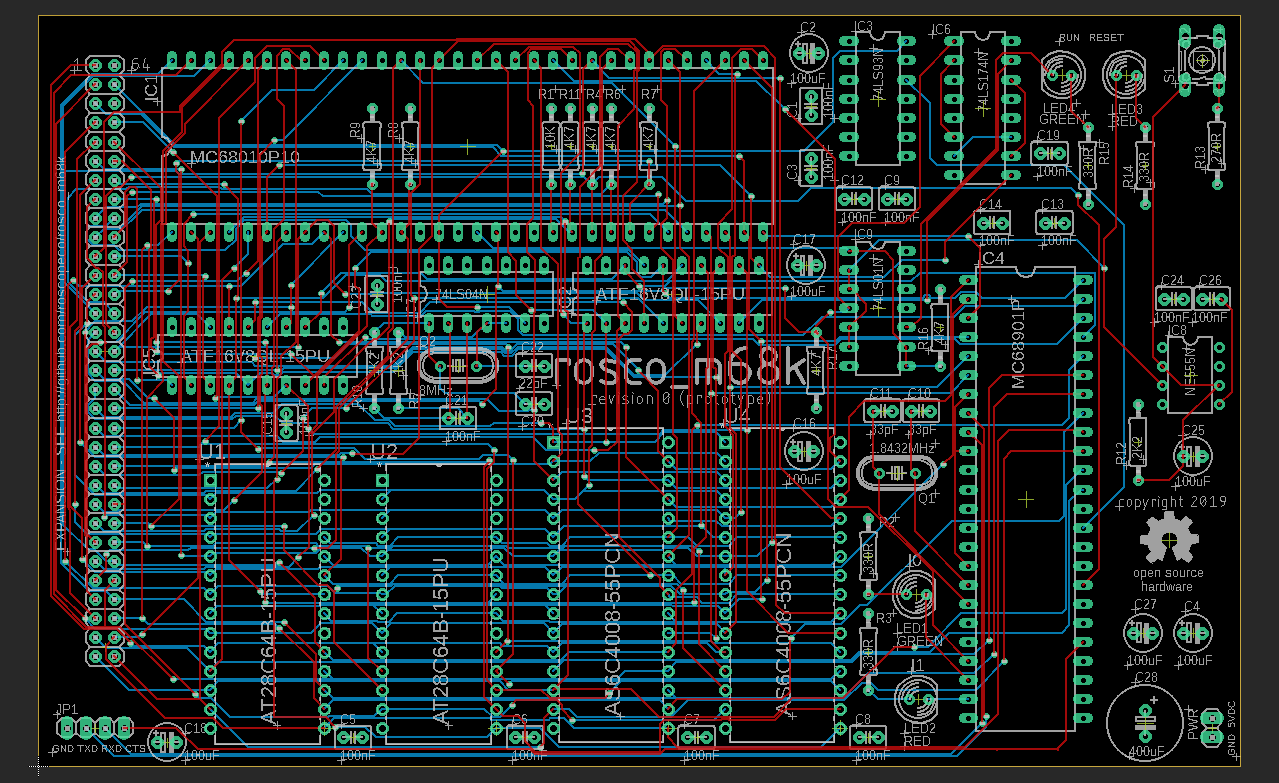Exciting times ahead! I've spent the last couple of days tidying up the schematic and finally made a start on a PCB design in Eagle. It turns out that PCB design is hard, but I've pushed on with it, learnt a lot, and started over at least four times (ripup ; has been a go-to command). I've used the autorouter to help me see where component placement was sub-optimal, and then I've moved things around and tried again. I wish I could say I'd hand-routed everything but I've definitely had help from the autorouter - I let it get me started and then spent many hours redoing its craziness. So I guess the final board is a kind-of collaboration between me and the autorouter...
One thing I found early on was that the board was just too full to allow sane routing. There were still eight 7400-series chips on there when I started, so I decided it was time to put some more of the glue logic onto an ATF16V8BQL. I wrote another bit of CUPL code to handle more of the glue logic. The code looks like this (pin declarations etc omitted, full code here):
IACK = FC0 & FC1 & FC2; DTACK = !IACK & ((IOSEL & MFPDTACK) # EVENROMSEL # ODDROMSEL # EVENRAMSEL # ODDRAMSEL ); MFPDS = LDS # IACK; RAMOE = RW;
And just like that, four 7400-series ICs were removed from the schematic. Obviously I tested it first on the breadboard before I tore down the old circuits, but it works like a charm.
That done, the routing was made a bit easier, but (being cheap) I was still trying to do everything on a two-layer board. I quickly gave up on that though (I think after the third ripup;) and switched to a four-layer design with power and ground planes. Sure it's upped the cost (OSHPark are quoting me USD 248 for three boards vs $124 for three two-layer boards) but it's worth it, both from the routing point of view and the electrical one - I'm confident I won't have any issues with burnt out traces or grounding issues.
This is the board as it currently looks (Layers 2, 15 and bNames omitted for clarity):

It's by no means perfect (I'm still a n00b remember) and probably isn't done at this point, but it passes all the electrical and design rule checks (with OSHPark's rules included) and I'm reasonably confident it will work, so I'm going to go ahead and order three as prototypes and see how it goes.
Before I do that though, I'm waiting on those replacement 68901's to arrive, because depending on whether they fix the problem or not I may have to do a bit more work on the design - if so I'll update the board before I send it off for manufacturing.
As usual, all of this is now merged into master and available on Github. You'll also find updated schematics there (also as a PDF if you're not an Eagle user) and an updated BOM.
 Ross Bamford
Ross Bamford
Discussions
Become a Hackaday.io Member
Create an account to leave a comment. Already have an account? Log In.